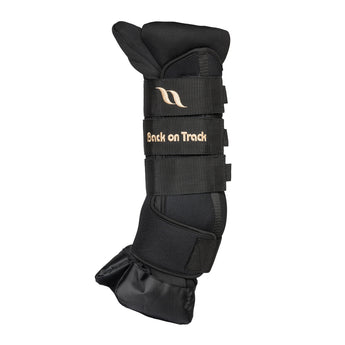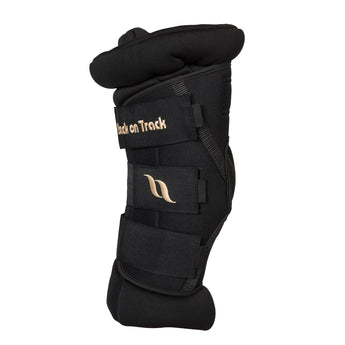An important member of your family, you want your dog to be around for as long as possible. As such, providing accurate care for your pup is much easier when you know what to look for—health care should be proactive, not reactive. This guide to common health issues for popular dog breeds provides a brief overview of the diseases and medical conditions that may be prevalent in your pooch.
Small Dogs
Pug
With their expressive eyes and wrinkly faces, it’s no wonder why so many people love pugs. These defining features, however, are common sources of health problems in this short and stocky breed. Pugs’ large eyes are prone to several issues, including dry eye and pigmentary keratopathy. This is when dark black spots begin to cover the cornea, resulting in loss of vision. Medications can stimulate the tear ducts and treat dry eye, as well as disperse the pigments that cover the pup’s eye during pigmentary keratopathy. Pugs’ bulging eyes also make them susceptible to proptosis, where the eye becomes dislodged from the eye socket. This often comes as a result of a bite or injury near the eye and should receive immediate medical attention.
Chihuahua
With their small size and charming temperament, Chihuahuas are the perfect pet for owners who never want to leave their furry friend at home. Chihuahuas are a relatively healthy breed though they are susceptible to many of the same health problems that are common in smaller dogs. Patellar luxation, for example, is more common in small dogs, and Chihuahuas are particularly prone to this issue. Patellar luxation is typically caused by a genetic malformation and occurs when the dog’s kneecap slides out of place and becomes dislocated. This knee issue may cause your dog to limp or walk abnormally, so be sure to watch for any
changes in your pup’s gait. Occasionally, the kneecap may pop back into position on its own and you won’t need to seek professional medical help. However, in extreme cases or if you find your dog suffering from this injury frequently, you may consider surgery as an alternate option.
Dachshund
Dachshunds are easily recognizable for their short stature and long bodies. Sometimes referred to as wiener dogs, the tiny pups are high in curiosity and energy. Due to their energetic personalities and long bodies, Dachshunds commonly suffer from back and spine problems. Intervertebral Disk Disease (IVDD), for instance, is more prevalent in dachshunds than in any other dog breed. This disease occurs when the cushioning between vertebrae in the spine become displaced or ruptures into the spinal cord space. This causes the discs to put pressures on nerves along the spinal cord and can lead to pain or nerve damage for your pooch. Luckily, you can treat this disease with anti-inflammatories or steroids; surgery is only necessary in extreme cases of IVDD. To prevent your pup’s chances of developing this disease, be sure to feed them a nutritious diet to ensure they maintain a healthy weight, as this will put less pressure on their back. Additionally, limit the amount your pup jumps off furniture or walks down the stairs, as this can put a strain on their back and cause their spine to curve unnaturally.
Medium Dogs
Bulldogs
Short and stocky yet strong and sweet, bulldogs are an adorable breed that has become a symbol of courage around the world. Unfortunately, this friendly breed does experience several health issues due to their unique build. The most prevalent health issue for bulldogs is problems breathing due to their short snout and wrinkled face. This can lead to a condition called Brachycephalic Airway Syndrome. Owners can characterize this problem via rapid and noisy breathing, frequent panting, coughing or gagging, and difficulty eating or swallowing. Though this syndrome may cause your dog to have trouble running long distances, the symptoms are mild and don’t require medical attention. Dogs with this condition can live a happy and active life, though owners should be careful not to overexert their dog. Additionally, bulldog owners should be cautious of their pup overheating. Dogs cool themselves off by panting—bulldogs have a harder time with this due to their shortened snout. Be sure to keep your dog cool while exercising, as excessive heat and humidity can worsen the condition.
Poodles
Don’t let the stylish hairdo fool you. Poodles are incredibly active and smart, making them a well-loved pet among children and adults. Despite their luscious locks, some poodles may experience Sebaceous Adenitis (SA), a hereditary skin disease caused by inflammation of the sebaceous glands which can lead to hair loss. While there is currently no cure for SA, frequent baths and oiling of the dog’s skin to remove dead hair and scaling can treat its symptoms. Additionally, poodles are also more likely to receive an Addison’s Disease diagnosis compared to other breeds. Addison’s Disease is a hormonal disorder that causes the adrenal glands to limit their production of important hormones such as cortisol and aldosterone. These hormones help regulate water and electrolyte levels and combat stress. Luckily, poodle owners can treat this disease with oral medication and your dog can continue to lead a happy and normal life.
Beagles
Originally bred as hunting dogs, Beagles are friendly and loyal companions that are eager to join their owners on any adventure. This agile breed is relatively healthy, however, due to their floppy ears, they’re more likely to develop ear infections compared to other breeds. Common signs that your dog may have an ear infection include redness and swelling, head shaking, or pawing at their ear. Ear infections can be easily treated with topical medications or antibiotics, but you should always consult with a veterinarian first. Beagles may also experience epilepsy, which can lead to sudden seizures that may cause a temporary loss of consciousness. Seizures in dogs are similar to seizures in humans in that they happen for a brief period, usually between 30 and 90 seconds, in which the dog may shake and move erratically. Several medications treat dog seizures, and therapy has also proven effective in some cases.
Large Dogs
German Shepherd
Loyal, courageous, and intelligent, German Shepherds have a long history of working alongside humans—from police work to military aid. These hard-working dogs are susceptible to many of the same ailments as other large dog breeds, the most common being hip dysplasia. This is a genetic condition that occurs when the hip socket forms incorrectly, causing the femur to move around within the joint. This can cause pain and stiffness for your dog and may even lead to lameness or arthritis. There is no cure for hip dysplasia but there are treatments that can improve your dog’s mobility and help them
live more comfortably with arthritis and joint pain.
Golden Retriever
Golden Retrievers are a friendly and intelligent breed that has become an ideal family dog over the years. These dogs are equally as content cuddling on the couch as they are running and playing with children. Due to their energetic nature, however, Golden Retrievers often face issues with their joints, including hip and elbow dysplasia. Similar to hip dysplasia, elbow dysplasia is an inherited condition that occurs when the three elbow bones do not align properly. This condition is recognizable through a
dog’s swollen hock joint, which could eventually lead to lameness or arthritis. Symptoms of elbow dysplasia are noticeable from a young age and typically worsen as the dog ages. Treatment for this condition depends on the severity, but veterinarians recommend surgery in most cases.
Labrador Retriever
According to the
American Kennel Club, since 1991, Labrador Retrievers have been the most common dog breed in America, and with good reason. These dogs are active, extremely friendly, and generally very healthy. Like other large dogs, they may experience hip and elbow dysplasia, and they are also susceptible to certain heart diseases, including Subvalvular Aortic Stenosis (SAS). This disease usually affects large dogs—identifiers include lethargy, fainting, or weakness following exercise. This heart condition is treatable thanks to antibiotics and cardiac medications as well as limiting the amount of exercise.
Just like humans, every dog comes with its own unique health needs and concerns. The common health issues for the popular dog breeds listed above are prevalent in many other dog breeds, as well. Before adopting any dog, you should
research their breed and individual health risks to ensure that you can care for their needs in the best way possible.














